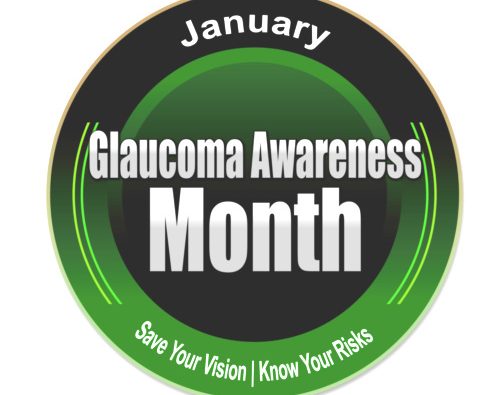Glaucoma Awareness Month | Risk Factors of Glaucoma
Glaucoma awareness month is January. Glaucoma is a potentially blinding disease which destroys the optic nerve. It is a leading cause of blindness and the prevalence (how common) increases with age.
Glaucoma affects more than 3 million Americans and the National Eye Institute estimates the figure to increase to 4.2 million by 2030 – more than double. Globally, the disease affects over 60 million people
There are many types of glaucoma based upon the mechanism by which the optic nerve becomes damaged.
Risk Factors for Glaucoma
It is more likely that you can get glaucoma if a close relative has been diagnosed in the past, that is, your family history plays a major risk factor
Glaucoma is also more likely to develop in;
- African Americans > 40 years old
- Everyone over 60 (especially Latino/Hispanics)
- Family History
- Asian/farsighted patients
If you have been diagnosed with glaucoma, share your news with your family. Early detection is important.
Importance of Regular Eye Examinations
There are many types of glaucoma. Almost all types are “silent” and cause no pain. As glaucoma is the leading cause of preventable blindness, early detection, diagnosis and treatment is essential in saving your vision.
Regular and routine eye examinations should include an assessment of your risk for glaucoma and might include;
- Visual Field Testing
- Corneal Pachymetry (thickness of your cornea can influence the eye pressure readings)
- Optical Coherence Tomography (OCT) measures potential loss of nerve fibers
- Eye pressure – IOP (intraocular pressure)
- Dilated Eye Examination
Symptoms of Glaucoma
There are usually no symptoms of “open angle” glaucoma, the most common form of glaucoma in the United States. Vision loss normally affects the “side vision” or peripheral vision. Visual field testing is important to demonstrate patterns of vision loss.
In cases of advanced glaucoma, where the peripheral vision loss is so extensive, the central vision is involved.
Pain, redness, tearing, blurry vision and nausea can occur in angle closure glaucoma where the symptoms are caused by sudden increase in eye pressure.
If you have concerns about glaucoma, please call us (202.686.6700) or email us!
We look forward to meeting you.
The Doctors of Eye Associates of Washington, D.C.
Serving Washington, D.C. and Tysons Corner
Board Certified Eye Physicians and Surgeons






